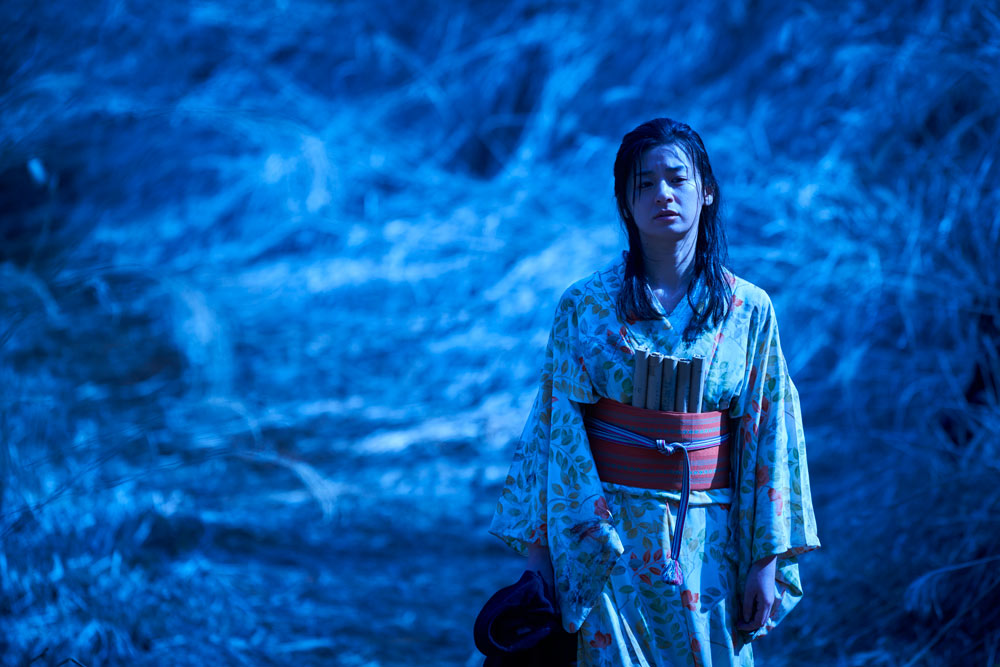
©2018 “Dynamite Graffiti” Production Committee
For those who want to know more about the backbone of the ``Dynamite Graffiti'' about the life of a legendary charismatic magazine editor!
2018.03.20
"Dynamite Graffiti" synopsis
Akira Suei was born and raised in a rural town in Okayama where there are no buses, and at the age of 7 he experiences the shocking death of his mother. A mother suffering from pulmonary tuberculosis and abandoned by doctors hugs her neighbor's only son in the mountains, ignites dynamite, and explodes! I committed suicide. Suei then moved to Tokyo, worked as a cabaret signboard painter and illustrator, and then worked for a small erotic magazine publisher. As editor-in-chief, he launches a new type of erotic magazine. During his days of struggle, he met Nobuyoshi Araki, and other great artists such as Shinbo Minami, Genpei Akasegawa, and Kozaburo Arashiyama gathered around Suei. Repeatedly being banned and launched, he released numerous magazines into the world, including ``Weekend Super'' and the later legendary ``Photo Jidai.''
Index
- The youth story of Akira Suei, who took the erotic magazine industry by storm with his core subculture.
- The movie is based on Akira Suei's autobiographical essay book of the same name.
- The deep world of the masterpiece “Suicide” that can be called “the original work behind the scenes”
The youth story of Akira Suei, who took the erotic magazine industry by storm with his core subculture.
A new work by Masayoshi Tominaga, the talented director who made `` Pumpkin and Mayonnaise '' a smash hit in 2017, ``A Dynamite Graffiti'' is directed by Suei, a legendary and charismatic magazine editor who is now mainly known as an essayist. It is modeled after the life of Akira (born in 1948). The ``Dynamite Scandal'' in the title refers to an incident when Suei was a seven-year-old boy living in the countryside of his hometown of Okayama Prefecture, when his then 30-year-old mother committed suicide with dynamite with her younger mistress.
The shocking death of his biological mother seems to have had a great influence on Suei's subsequent self-awareness and personality development. In the movie, the part in 1955 that is written in a monotone with blue as the base color - the scene of the mother Tomiko, played by Machiko Ono, running breathlessly into the world of momentary love and death, is played brilliantly by Tasuku Emoto ( It always haunts the life of the main character, Suei, who plays a mysterious role (or a mysterious performance!), like a sweet nightmare, or like a basso continuo that sets the tone of his life. One of the themes of this work is the cause and effect that connects these "mothers and sons."

“Dynamite Graffiti” ©2018 “Dynamite Graffiti” Production Committee
On the other hand, the film ``The Dynamite Graffiti'' is filled with the joy of a true story and the excitement of a coming-of-age story.
The industry field in which Akira Suei once worked was a genre called erotic magazines. However, the books he worked on as editor-in-chief at Self Publishing (currently Byakuya Shobo), such as ``NEW self'' (launched in 1975), ``Weekend Super'' (launched in 1977), and ``Photo Jidai'' (launched in 1981), were It was a core subculture magazine. With a free-for-all policy that connects all kinds of culture through erotica, the magazine continued to publish cutting-edge features and articles, even though it was often banned. By the way, the name ``Weekend Super'' comes from Jean-Luc Codar's `` Weekend '' (1967).
Appearing in Suei's magazine are photographer Nobuyoshi Araki, also known as Araki, Daido Moriyama, also a photographer, illustrators and essayists Shinbo Minami and Mizumaru Anzai, artist and writer Genpei Akasegawa, and editor and writer Kozaburo Arashiyama. , the writer Kojimasa Tanaka, the critics Masaaki Hiraoka and Takashi Ueno, the contemporary artist Yutoku Taishi Akiyama, and sometimes the manga artists Fujio Akatsuka and Kyoko Okazaki, and even Tamori. He is truly a man of many talents, and if you look at musicians such as Hiroshi Mikami and Koichi Makigami of Hikashu, there is no end to it.
Thus, from the late 1970s to the 1980s, the area around Suei turned into a haven for underground cultural figures and their wannabes (reserves and followers of celebrities).
The movie is based on Akira Suei's autobiographical essay book of the same name.

